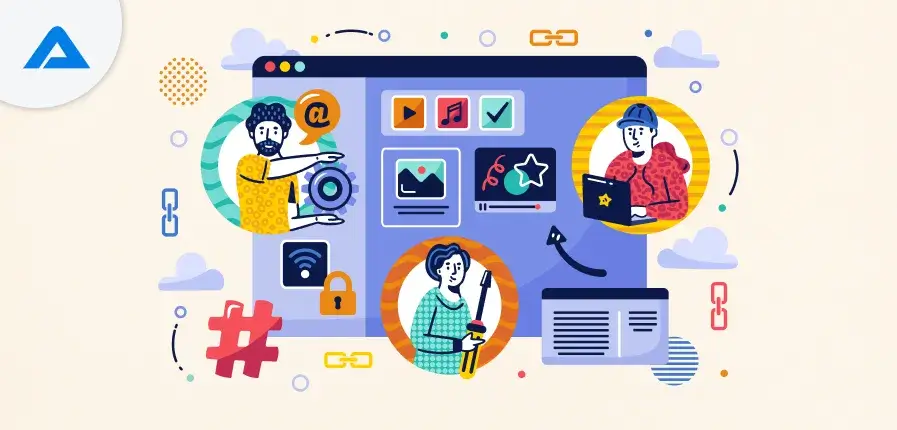Live Streaming Services: A Deep Dive Into the Future of Entertainment
Live streaming services have revolutionized how we consume media and entertainment. From gaming and music concerts to sports events and personal vlogs, live streaming platforms have provided creators and viewers a new way to connect in real-time. With millions of people using live streaming services every day, the industry is expanding rapidly, becoming a cornerstone of digital entertainment. In this article, we’ll explore the major live streaming platforms, their features, and the impact they’ve had on entertainment and culture.
1. What Are Live Streaming Services?
Live streaming services allow users to broadcast live video content over the internet in real-time. Unlike traditional television broadcasts, live streams are accessible to anyone with an internet connection, providing flexibility for both content creators and viewers. These services have gained immense popularity due to their accessibility and the interactive experience they offer. Whether it’s for entertainment, education, or marketing, live streaming has become an essential tool for content creators and businesses alike.
Live streaming platforms often allow viewers to interact with the streamer through live chats, donations, or other engagement tools. This interaction creates a sense of community and immediacy, setting live streaming apart from pre-recorded content.
2. Popular Live Streaming Platforms
Twitch: The King of Gaming Streams
Twitch is the most well-known platform in the world of live streaming, particularly for gamers. Launched in 2011, Twitch allows users to broadcast their gameplay in real-time while interacting with their audience via live chat. Over the years, it has evolved to include streams on topics ranging from music, art, and “just chatting” sessions, allowing non-gamers to find an audience as well.
Twitch boasts a large and active community, with millions of monthly active users and over 2 million creators streaming content daily. Viewers can subscribe to their favorite streamers, provide donations, and even receive perks like exclusive content. This business model has helped Twitch become the go-to platform for gamers and a major player in the live streaming industry.
YouTube Live: The All-In-One Platform
YouTube Live allows content creators to broadcast live video to their subscribers, expanding beyond its original function as a video-sharing platform. Unlike Twitch, YouTube Live supports a wide variety of content categories, such as gaming, news, concerts, webinars, and even live events like sports or charity telethons. One of YouTube Live’s key strengths is its integration with YouTube’s vast library of on-demand videos, allowing streamers to build their audience more easily.
YouTube Live offers monetization options through ads, super chats (paid messages that stand out), and memberships, making it an attractive platform for streamers looking to earn revenue from their live content.
Facebook Live: Bringing Streaming to Social Media
Facebook Live, launched in 2016, has transformed Facebook into a live streaming platform, enabling users to broadcast live videos to their friends, followers, or the public. It is popular among businesses, influencers, and individual creators for its ease of use and the ability to reach a large audience directly through the Facebook platform.
One of Facebook Live’s main advantages is its ability to promote streams to a large audience via social sharing and the site’s massive global user base. Businesses often use Facebook Live to host Q&A sessions, launch products, or interact with customers in real time. With monetization options like fan subscriptions and ad breaks, Facebook Live has become an important player in the live streaming market.
Instagram Live: Real-Time Stories
Instagram Live is an extension of Instagram’s Stories feature, allowing users to broadcast live video to their followers. Since its launch in 2016, it has grown in popularity, especially among influencers, celebrities, and brands looking to engage with their audience. Instagram Live has a unique advantage in its integration with Instagram’s visual content and stories, offering a more intimate and personal experience.
Unlike some other platforms, Instagram Live focuses more on short, real-time interactions rather than long-form streaming. It’s perfect for Q&A sessions, behind-the-scenes content, and live collaborations between users. Instagram also offers monetization tools for creators through features like badges, allowing users to support their favorite streamers.
3. The Rise of Live Streaming in Entertainment and Marketing
The growth of live streaming services has had a profound impact on entertainment and digital marketing. During the COVID-19 pandemic, live streaming became an essential tool for artists, businesses, and entertainers who could no longer host live in-person events. From virtual concerts to live gaming tournaments and online conferences, live streaming filled the gap left by traditional venues, creating new opportunities for engagement.
In marketing, live streaming is used to connect with customers in real-time, allowing businesses to promote products, answer questions, and offer demonstrations. This interactive aspect of live streams has made them a popular tool for brands, particularly those targeting younger, tech-savvy audiences. Influencers and content creators also use live streaming to build closer relationships with their followers, driving higher levels of engagement and loyalty.
4. Monetization Opportunities for Streamers
Live streaming platforms offer multiple ways for content creators to monetize their broadcasts, turning live streaming into a viable career for many. Common monetization methods include:
- Subscriptions: Platforms like Twitch and YouTube allow viewers to subscribe to their favorite creators for a monthly fee, providing perks such as exclusive content, emotes, or ad-free viewing.
- Donations: Many live streaming platforms allow viewers to directly donate money to their favorite creators during a stream, which is a major income source for some.
- Ad Revenue: Creators can also earn money through ads placed before, during, or after their streams.
- Sponsorships: As live streaming grows in popularity, brands are increasingly partnering with streamers to promote products or services to their audience.
5. The Future of Live Streaming
As internet speeds increase and technology advances, the future of live streaming looks bright. New features like virtual reality (VR) and augmented reality (AR) integrations could take live streaming to new heights, offering more immersive experiences for viewers. With major platforms continuously improving their services and more businesses adopting live streaming as part of their marketing strategy, the growth of the live streaming industry shows no signs of slowing down.
Conclusion
Live streaming services have fundamentally changed how we consume entertainment, offering real-time, interactive experiences that connect viewers and creators in a way that traditional media never could. Platforms like Twitch, YouTube Live, Facebook Live, and Instagram Live have not only provided new avenues for entertainment but also created opportunities for content creators to make a living. As live streaming technology continues to evolve, its influence on the entertainment and marketing industries will only deepen, making it one of the most exciting trends in digital media.














Post Comment